
Introduction
Overview of Theropods
Theropods are fascinating creatures that once roamed the Earth, characterized by their bipedal stance and carnivorous diet. This diverse group includes some of the largest predators to have ever existed, such as the fearsome Tyrannosaurus Rex and the agile Velociraptor. Understanding theropods requires a peek into their physical characteristics and ecological roles. What makes theropods particularly intriguing is their evolutionary journey, which connects them to modern birds, a lineage that showcases nature’s adaptability and innovation.
Theropods belong to a broader clade called Dinosauria, which, alongside other dino groups, populated the Earth during the Mesozoic Era. They are not only identified by their sharp teeth and claws but also by distinct skeletal features, such as hollow bones that contributed to their lightweight and agility. This group offers an incredible window into prehistoric life, allowing scientists to piece together how these incredible beings adapted and evolved over millions of years.
Importance of Studying Prehistoric Predatory Giants
Studying theropods is crucial not just for understanding prehistoric ecosystems but also for learning about the evolutionary processes that shaped life on Earth. By examining the fossils and remains of these predatory giants, researchers delve into several important areas:
- Ecological Insights: Theropods played significant roles as apex predators in their environments. Understanding their hunting strategies, dietary preferences, and interactions with other species offers insight into ancient ecosystems and the pushing and pulling of food chains.
- Evolutionary Biology: Theropods are paramount in studying how species evolve over time. Their lineage provides key insights into the transition from dinosaurs to birds, revealing adaptations that were crucial for survival in changing climates and landscapes.
- Paleoenvironmental Reconstruction: Fossils of theropods can illuminate the historical climate and geographic shifts of Earth. By analyzing the sediment and context of these finds, scientists can reconstruct ancient environments, providing a narrative of how and where these creatures lived.
- Cultural Influence: The fascination with these remarkable beings extends into popular culture and education. From movies to literature, theropods capture the imagination of many, showcasing humanity’s enduring connection to these prehistoric titans.
On a personal note, engaging with the idea that dinosaurs like T. Rex or Velociraptor once roamed the Earth sparks a sense of wonder. Imagine standing in a lush prehistoric forest, quietly observing one of these grand creatures as it stalks through the underbrush. Such imagery not only instills curiosity but also reinforces the importance of preserving our planet and understanding its history.
In conclusion, the study of theropods is not merely an academic exercise; it is a journey into understanding life itself, the past ecosystems that thrived long before humanity, and the shared lineage that connects us all. As we delve deeper into this subject matter, we uncover insights that move beyond science and echo through the very fabric of our existence.

Evolution of Theropods
Early Theropod Ancestors
The evolutionary journey of theropods is a captivating tale that begins about 230 million years ago during the Late Triassic period. The earliest ancestors of theropods were small, bipedal creatures that exhibited unique adaptations. These humble beginnings set the stage for the incredible diversity that would follow.
- Initial Characteristics: The first theropods, like Eoraptor and Herrerasaurus, displayed a mix of traits that differentiated them from their contemporaries. They were:
- Bipedal, moving primarily on their back legs.
- Equipped with sharp teeth and claws, hinting at a carnivorous diet.
- Relatively small in size, which allowed them to navigate their environments with agility.
Unlike the giants we often associate with theropods, the early forms showcased adaptability and resourcefulness.
Personal anecdotes can often illustrate these points better. Imagine wandering a Jurassic landscape and spotting one of these small, agile creatures darting among the foliage, hunting insects. It’s intriguing to visualize how these ancestors adapted to their surroundings, gradually paving the way for later, larger predators.
Diversification and Adaptations
As the Earth changed, so did theropods. The Jurassic and Cretaceous periods brought about a rush in diversification, leading to remarkable adaptations that made theropods some of the most successful predators of their time.
- Notable Adaptations:
- Climate Adaptation: Theropods developed features like feathers for insulation and display. This adaptation played a crucial role in surviving varying climates and also provided a foundation for the evolution of flight in some lineages.
- Size Variation: The size of theropods varied dramatically. Smaller species like Compsognathus thrived in the dense undergrowth, while massive predators like Tyrannosaurus rex dominated the landscape.
- Dietary Specialization: Some theropods evolved unique hunting strategies and specialized diets. For instance, Spinosaurus was known to have adapted to a semi-aquatic lifestyle, hunting fish with its elongated snout.
A fascinating example of diversification is the evolution of the raptors—birds of prey that showcase athleticism and hunting prowess. Think about them in action: they’re fast, intelligent, and exhibit complex social behaviors while hunting in groups, much like many modern birds of prey do today.
Understanding the evolutionary path of theropods also sheds light on how environmental pressures influence species. As habitats shifted and prey became scarce or abundant, theropods adapted by modifying their physically and behaviorally to thrive.
In conclusion, the evolution of theropods is a dynamic narrative characterized by adaptability, diversification, and resilience. From their early ancestors to the awe-inspiring giants, these creatures illustrate the incredible journey of natural selection, paving the way for a lineage that would eventually include the vibrant birds we cherish today. Each phase of theropod evolution tells a story of survival, showcasing nature’s remarkable ability to transform and flourish in an ever-changing world.
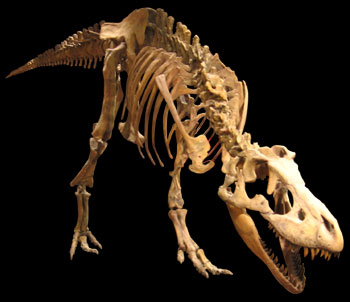
Characteristics of Theropods
Physical Features
As we delve deeper into the spectacular world of theropods, it’s clear that their physical features played a significant role in their success as predators. From the streamlined bodies of smaller species to the massive frames of their larger counterparts, theropods exhibited a remarkable array of adaptations.
- Bipedal Stance: One of the most defining characteristics of theropods is their bipedal locomotion. Their two-legged stance not only enhanced balance but also allowed for greater speed and agility, crucial for both hunting and evading larger predators.
- Hollow Bones: Many theropods had hollow bones, which made them lighter and more agile without sacrificing strength. This feature might be comparable to a modern bird’s structure; just imagine the grace with which a hawk navigates the sky using lightweight bones.
- Clawed Feet and Sharp Teeth: Theropods were equipped with formidable claws and sharp teeth designed for gripping and tearing flesh. For instance, the curved claws of Velociraptor were essential for grasping prey, making each hunting encounter a test of skill and precision.
- Feathers: Interestingly, some theropods are believed to have had feathers, even if they never took to the skies. These feathered adaptations could have served multiple purposes, including insulation, display for mating rituals, or camouflage while hunting.
An amusing personal anecdote often shared is how children are fascinated by the differences in size and shape between theropods. Take a moment to visualize a child excitedly comparing a sleek, feathered dinosaur like Archaeopteryx to the bulky, imposing Tyrannosaurus rex – it’s a striking demonstration of nature’s diversity!
Unique Hunting Strategies
Beyond their physical adaptations, theropods developed a variety of unique hunting strategies that reflected their ecological niches. These strategies exemplify innovation in evolving predatory behavior.
- Pack Hunting: While solitary hunting was not uncommon, some theropods, like Velociraptor, showcased social hunting tactics. They are believed to have hunted in packs, coordinating their efforts to take down larger prey. Imagine a group of these agile creatures working together, surrounding their prey and taking it down with precision.
- Ambush Techniques: Many theropods employed ambush strategies, utilizing their environment for stealth. The cunning Allosaurus, for instance, was known to hide among the trees or rocks, waiting patiently for unsuspecting prey to wander too close. This method required patience and skill rather than sheer power, which made it all the more fascinating.
- Adapting to Prey: Different species showed remarkable adaptability to available food sources. For example, Spinosaurus, with its crocodile-like snout, specialized in hunting fish, demonstrating how physical features can dictate hunting strategies.
Observing these behaviors illustrates how theropods continuously innovated to fulfill their roles in their ecosystems, highlighting the balance of adaptation and skill that allowed these ancient predators to flourish.
In conclusion, the characteristics of theropods—ranging from their impressive physical features to their sophisticated hunting strategies—paint a vivid picture of their importance in prehistoric ecosystems. Each trait contributed not only to their survival but also to the intricate tapestry of life in the Mesozoic Era. The legacy of these incredible creatures continues to intrigue us, inspiring awe and curiosity about the natural world.

Famous Theropods
Tyrannosaurus Rex
No discussion about theropods can begin without mentioning the iconic Tyrannosaurus rex. This colossal predator has captivated the imagination of both scientists and the public alike since its discovery.
- Physical Features: Standing up to 12 feet tall and measuring over 40 feet in length, T. rex is renowned for its massive head and powerful jaws. With teeth that could measure over 8 inches long, it was capable of exerting incredible bite force—rumored to be among the strongest of any terrestrial animal. Despite its short arms, which often sparked jokes, they were still robust and may have served specific functions, such as grasping prey.
- Ecological Role: As an apex predator, T. rex played a crucial role in its ecosystem, keeping herbivore populations in check. Its hunting methods are still debated; some scientists believe it may have scavenged as much as it hunted, much like modern-day lions.
A fun personal anecdote shared by many dinosaur enthusiasts is their childhood excitement when learning about T. rex, often leading to skirmishes over toy dinosaurs during playdates. Who hasn’t pretended to be a giant T. rex, roaring loudly and charging through imaginary jungles? This iconic image has made dinosaurs immensely relatable!
Velociraptor
On the other end of the theropod spectrum, the Velociraptor also holds a place of fame in both paleontology and popular culture, often portrayed as a cunning and agile predator.
- Physical Characteristics: Smaller than its T. rex counterpart, Velociraptor measured about 6.5 feet in length and stood around 1.6 feet tall at the hip. What truly set it apart were its signature sickle-shaped claw on each foot, which was potentially used for slashing and gripping prey. Contrary to how it’s depicted in movies, many paleontologists believe that Velociraptor had feathers, resembling a bird more closely than a typical dinosaur.
- Clever Hunting Tactics: Renowned for its intelligence, Velociraptor likely employed pack hunting strategies. Evidence suggests they roamed in groups, showcasing social behaviors that contributed to their hunting success. Imagine a swift pack of Velociraptors coordinating an ambush on a herd of herbivores—what an exciting scene that would have been!
While many were introduced to Velociraptor through films like “Jurassic Park,” this depiction has spurred profound curiosity about its real-life behavior and ecological adaptations. Visitors to museums often find themselves captivated by the sleek and nimble silhouette of this theropod.
In summary, Tyrannosaurus rex and Velociraptor are two of the most famous theropods, embodying the diverse adaptations within this fascinating group. Through their physical traits, ecological roles, and portrayals in culture, these dinosaurs continue to draw interest and provoke discussions, ensuring their legacy will remain alive in both science and popular imagination. These stories remind us of how interconnected we are to the history of life on Earth—through wonder and curiosity, we explore our past.
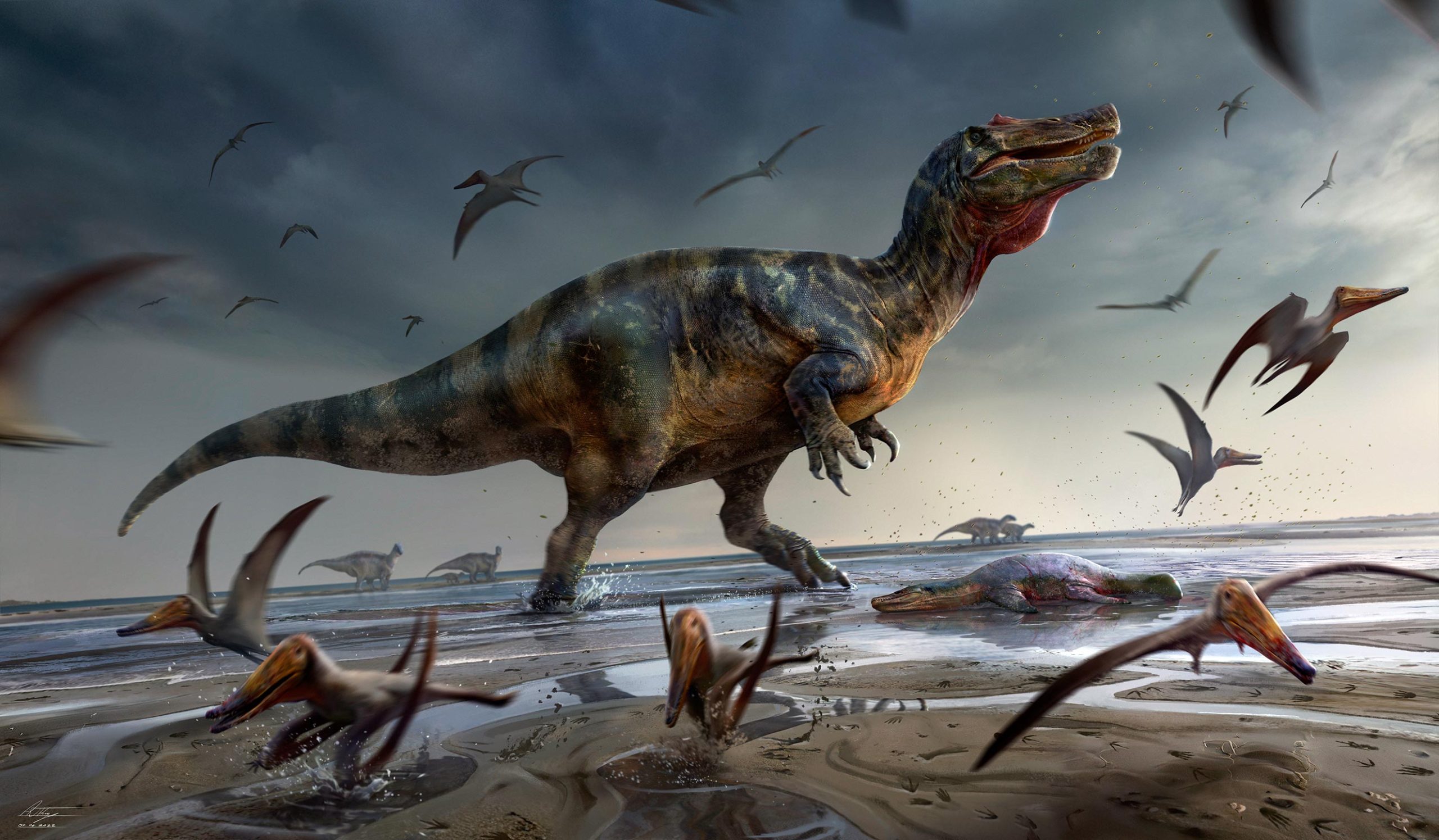
Fossil Discoveries
Notable Finds
The story of theropods wouldn’t be complete without a discussion of the remarkable fossil discoveries that have enriched our understanding of these incredible creatures. Each new find peels back layers of time, revealing secrets about life during the Mesozoic Era.
Some of the most notable fossil discoveries include:
- The First Tyrannosaurus rex Specimen: Discovered in 1902 in Montana, the first T. rex fossil forever changed the landscape of paleontology. This remarkably preserved skeleton provided invaluable insights into the anatomy and size of the most famous dinosaur. Imagine the excitement of the paleontologists at the time when they uncovered large bones that would later become a topic of fascination for generations!
- Velociraptor Finds in Mongolia: In the 1920s and 30s, Velociraptor fossils were uncovered in Mongolia’s Gobi Desert. These discoveries included well-preserved skeletons, complete with the distinctive sickle-like claws. The exposure of these fossils ignited discussions about the dinosaur’s predatory behaviors and social structures.
- Feathered Fossils from Liaoning, China: Perhaps some of the most groundbreaking discoveries occurred in the late 20th century when feathered theropod fossils were unearthed in Liaoning Province. Fossils like Microraptor provided direct evidence of feathers in certain theropods, suggesting a much closer link to modern birds than previously thought. It sparked a thrilling new perspective on the debate of avian evolution—imagine finding a dinosaur that could glide between trees like a small bird!
These fossilizations not only provide morphological data, but they also offer clues about behavior, diet, and habitat, ultimately portraying a vivid picture of theropod life.
Interpretations and Speculations
The interpretation of fossil findings can often lead to fascinating discussions and spirited debates among scientists. Fossils act as windows into the past, yet they can also be subject to various interpretations.
- Behavioral Insights: For example, the discovery of Velociraptor fossils in close proximity to other theropod remains led some researchers to speculate about hunting behaviors and pack dynamics. As with any scientific inquiry, conclusions often evolve as new evidence comes to light. Think about how a childhood game of “telephone” can twist messages—this is somewhat similar to how new findings can alter or enhance previous interpretations.
- Dietary Speculations: The analysis of tooth marks on fossilized bones has led to discussions about dietary habits. Are these marks from scavenging or active predation? Such questions keep paleontologists on their toes, pushing them toward explorations of the interactions that occurred on the prehistoric food chain.
- Environmental Context: Fossilized footprints left in thrice-cooked clay tell a story of climate and habitat. These “ichnites” reveal not only the size and behavior of theropods but also the environmental conditions that dictated their existence. Each footprint is like a page of history, enabling scientists to construct a more comprehensive picture of terrestrial ecosystems.
Personal reflections often arise from encounters with these findings, whether visiting a museum exhibit or listening to a passionate paleontologist share their insights. The sheer wonder of these fossil discoveries sparks curiosity, inviting enthusiasts and scholars alike to engage with the ongoing saga of Earth’s history.
In conclusion, notable fossil finds and their interpretations drive our understanding of theropods. Each fossil is a stepping stone towards reconstructing the distant past, continually fueling discussions about the creatures that once ruled our planet. Through ongoing research and discoveries, we gain not only knowledge but also an appreciation for the intricate tapestry of life that has unfolded over millions of years.
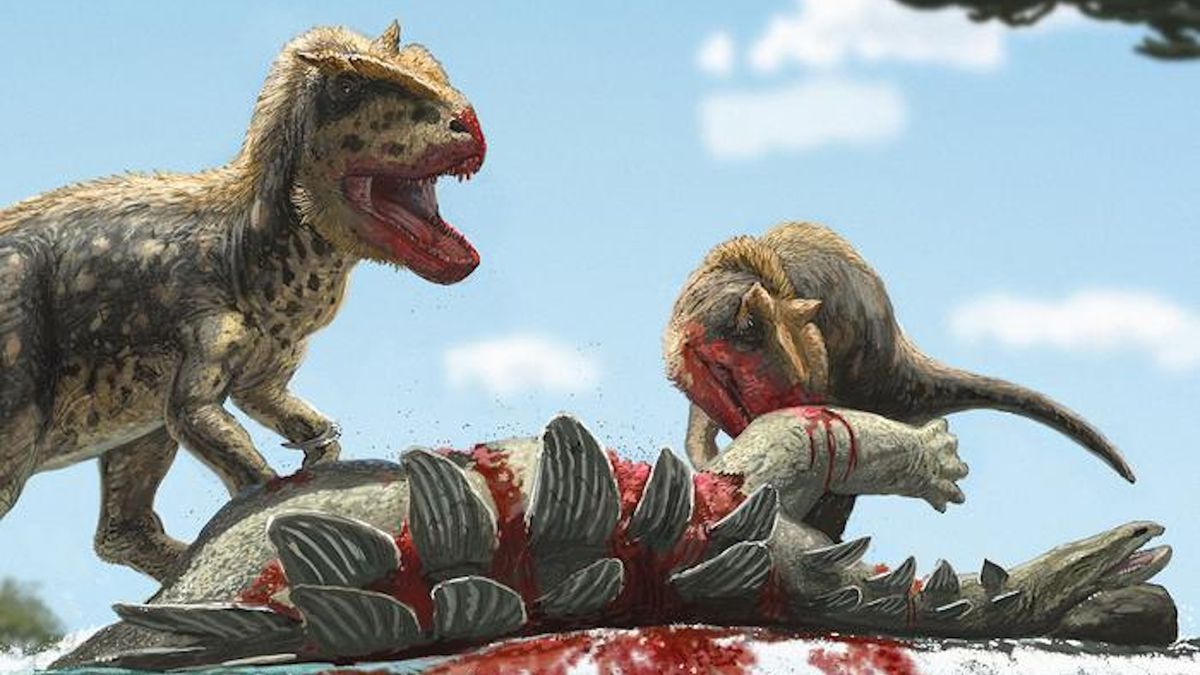
Theropods in Popular Culture
Depictions in Movies
Theropods have carved out a significant niche in popular culture, especially in the realm of movies. These magnificent beasts not only pique our curiosity about the prehistoric world but also spark our imagination with their vivid portrayals on the big screen.
- Jurassic Park Franchise: Perhaps the most iconic representation of theropods comes from Steven Spielberg’s Jurassic Park, released in 1993. The film showcased groundbreaking special effects that brought dinosaurs like Tyrannosaurus rex and Velociraptor to life in a thrilling way. The suspenseful scenes featuring T. rex breaking free from captivity became a defining moment in cinematic history. Many can remember clutching the arms of their seats during the movie’s climactic moments!
- Other Films: Since Jurassic Park, theropods have appeared in numerous films, from The Land Before Time to King Kong. Each depiction, whether serious or light-hearted, highlights different attributes of these incredible creatures. Some portray them as fearsome predators, while others emphasize their nurturing side, even as parents, like the mother Allosaurus in Walking with Dinosaurs.
Reflecting on these films evokes nostalgic memories for many moviegoers. Think back to those afternoons spent in a dark theater, gripping popcorn as terrifyingly realistic dinosaurs roamed the screen. Such portrayals not only entertain but also spark an interest in paleontology and a fascination with Earth’s distant past.
Influence on Literature
The influence of theropods extends far beyond the silver screen; they have also deeply permeated literature. From scientific works to fiction, these creatures inspire authors worldwide.
- Paleo-literature: Non-fiction books such as The Dinosauria compile extensive research on dinosaur science, while popular science works like Dinosaurs: The Most Complete, Up-to-Date Encyclopedia for Dinosaur Lovers of All Ages present engaging information in a friendly manner. These books educate readers about theropods and their environments, inviting readers to understand evolutionary history through the lens of engaging storytelling.
- Fictional Portrayals: Many authors have woven theropods into stories, often depicting them in thrilling narratives. Michael Crichton’s Jurassic Park book, released in 1990, was a compelling blend of science fiction and thrills, drawing readers into a world where dinosaurs were brought back to life. This narrative highlights the ethical dilemmas of scientific advancement and has left a lasting impact on popular culture.
- Children’s Literature: Theropods also star in children’s books, like How Do Dinosaurs Say Good Night? by Jane Yolen, which introduces young readers to the playful side of these ancient creatures. These stories, filled with whimsy, often teach moral lessons while sparking children’s imaginations and encouraging them to learn more about dinosaurs.
In closing, the portrayal of theropods in movies and literature underscores their significance in popular culture. They serve as vehicles for adventure, education, and excitement, bridging the gap between science and storytelling. Whether experienced on the big screen or through engaging pages filled with wonder, these magnificent dinosaurs continue to ignite passion and curiosity about the world that once was. Through the lens of creativity, we find ourselves drawn into the mysterious and intricate tapestry of life on Earth, inspiring future generations to explore and understand our planet’s history.
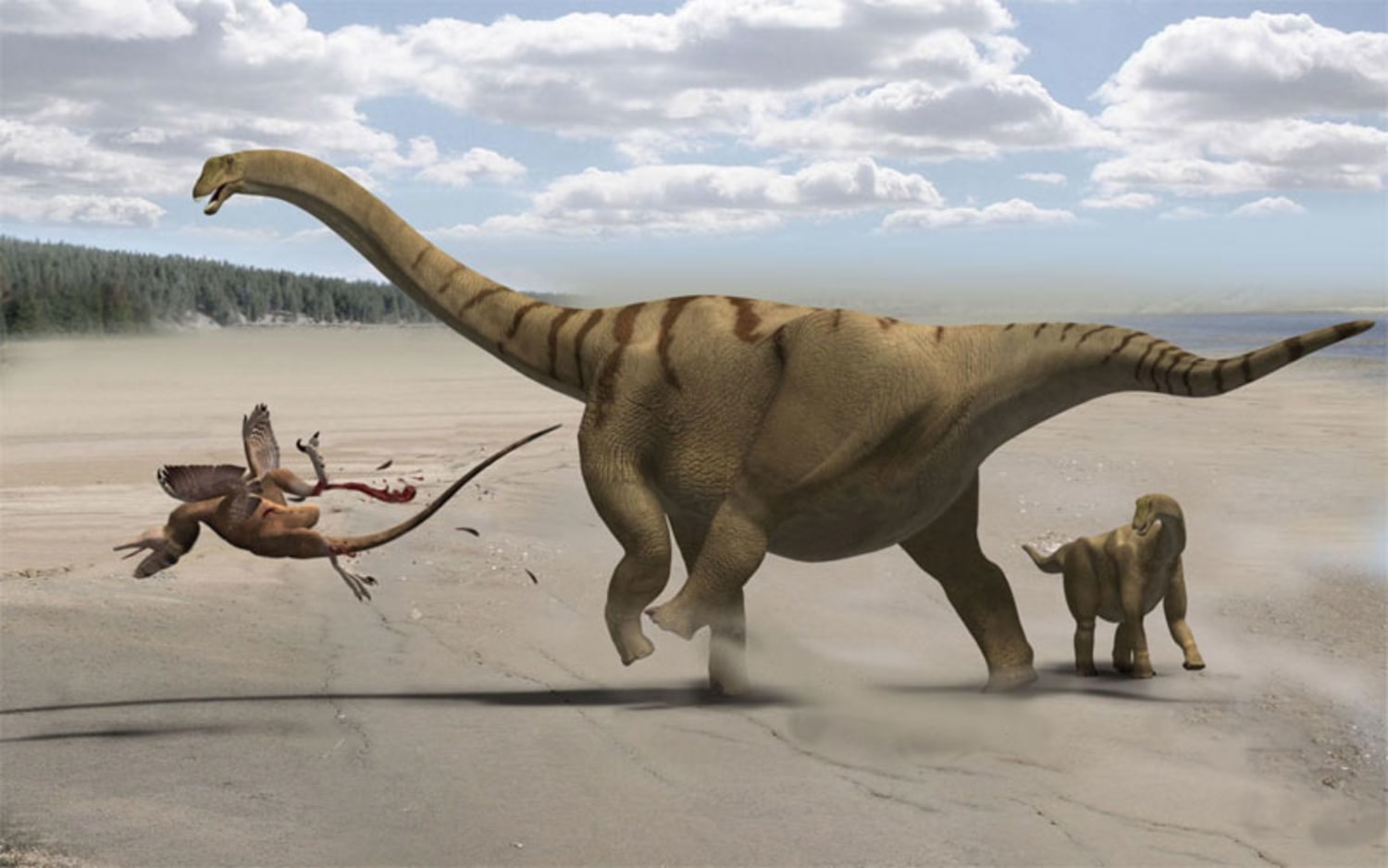
Extinction of Theropods
Theories and Explanations
The extinction of theropods, alongside many other dinosaur species, is a compelling chapter in the story of life on Earth. While the popular narrative often centers around a single catastrophic event, the truth is nuanced with various theories and explanations.
- The Chicxulub Impact: One of the most widely accepted explanations is linked to the impact event at Chicxulub, Mexico. This theory posits that a massive asteroid struck Earth around 66 million years ago, leading to widespread devastation. The ensuing fires, tsunamis, and “nuclear winter” conditions with reduced sunlight would have caused dramatic shifts in climate. Imagine being a theropod during this chaotic time—food sources dwindling, temperatures plummeting, and habitats altering drastically.
- Volcanic Activity: Another perspective includes the role of extensive volcanic eruptions in the Deccan Traps of India. These eruptions released vast amounts of volcanic ash and gases, significantly altering the atmosphere and leading to climate change. Increased carbon dioxide levels could have resulted in global warming, triggering ecological shifts unfavorable to many species, including theropods.
- Ecosystem Disruption: Some scientists also emphasize the cumulative effects of gradual environmental changes rather than a single event. Factors such as changing sea levels, shifting ecosystems, and competition from emerging species might have collectively contributed to the decline of theropod populations.
Reflecting on these theories evokes a sense of sadness. Picture the magnificent T. rex or stealthy Velociraptor facing environmental challenges that outmatched their adaptations. It’s a poignant reminder that even the most formidable creatures are not immune to the planet’s capricious nature.
Impact on Ecosystems
The extinction of theropods had significant repercussions on ecosystems during the Cretaceous-Paleogene (K-Pg) transition. As apex predators, theropods played critical roles in their food chains and environmental balances.
- Food Chains and Biodiversity: With the disappearance of these predators, herbivore populations experienced unchecked growth. This shift led to increased competition for available resources, potentially resulting in the decline of certain plant species. Imagine vast herds of herbivores roaming freely without fear, drastically altering landscapes and plant growth patterns.
- Emergence of New Species: The extinction of theropods ultimately allowed for the rise of other species, particularly mammals. This vacuum led to adaptive radiation, where surviving species rapidly evolved to fill ecological niches left behind. The dinosaurs’ demise opened the door for mammals to flourish, paving the way for future evolutionary developments, including the eventual rise of humans.
- Long-term Ecosystem Changes: The loss of theropods served as a lesson in ecological balance. It illustrated how interconnected all species are; the absence of one group can ripple through entire ecosystems, fundamentally altering them over millions of years.
In conclusion, the extinction of theropods is complex, influenced by a multitude of factors that shaped the course of Earth’s history. The resulting impact on ecosystems not only highlights the intricate web of life but also underscores the resilience of nature. While these magnificent creatures may no longer walk the Earth, their legacy continues to shape contemporary ecosystems and remind us of the delicate balance that sustains life on our planet. Through this lens, we can appreciate the past and remain vigilant stewards of the environment today.

Modern-Day Birds as Theropod Descendants
Evolutionary Links
The connection between modern-day birds and their theropod ancestors is nothing short of fascinating. In fact, birds are widely recognized as the last living descendants of a group of theropod dinosaurs, showcasing a remarkable evolutionary journey that stretches back millions of years.
- Shared Characteristics: Many features found in birds can be traced back to their theropod lineage. For instance:
- Feathers: The most striking evidence of this link is the presence of feathers in both theropods and birds. Early theropods, like Archaeopteryx, displayed feathered limbs that offered insights into the evolution of flight.
- Bone Structure: Birds possess lightweight bones with a similar structure to those of theropods, aiding in flight. This adaptation echoes characteristics seen in dinosaurs, demonstrating how evolution has sculpted their anatomy for new environments.
- Genetic Evidence: Scientific research utilizing genetic analysis has further solidified the connection between birds and theropods. Genetic sequencing shows that modern birds share a significant amount of DNA with theropods such as Velociraptor. It’s riveting to think that the common ancestors of these two groups communicated through a continuous chain of life, resulting in the diverse avian species we see today.
Reflecting on this connection, many would find it delightful to observe the similarities during a simple stroll in the park. One might notice a crow poised curiously on a tree branch, showcasing its intelligence, which echoes the clever hunting strategies of its theropod ancestors. This recognition can bridge the ancient and the modern in a profound way, connecting each observer to millions of years of evolutionary history.
Behavioral Similarities
In addition to physical traits, modern birds and their theropod ancestors share several behavioral characteristics that further underscore their connection.
- Hunting and Foraging: Birds exhibit a wide range of hunting strategies that can be traced back to their theropod ancestors. Raptors, such as hawks and eagles, exhibit predatory behaviors, often hunting in packs or utilizing stealth—all echoes of tactics seen in theropods like Velociraptor.
- For example, the cooperative hunting strategies of social birds—like crows and African hunting dogs in the wild—reflect ancient behaviors. Imagine watching crows work in tandem to target food, reminding us of how ancient predators may have coordinated hunts.
- Nesting and Parental Care: Many modern birds engage in nurturing behaviors that parallel potential maternal instincts of theropods. Fossil evidence suggests that some theropod species provided care for their young, indicating complex social structures akin to those seen in today’s avian families. Observing a mother bird coaxing her chicks from the nest reflects this instinctual drive for survival and protection.
- Vocalizations: Birds utilize various vocalizations to communicate, a behavior thought to be inherited from their dinosaur ancestors. This intricate form of interaction not only aids in finding mates but also serves essential roles in social structures. Listening to the melodious calls of birds can evoke imagery of an elaborate communication system employed by their ancient relatives.
In conclusion, the evolutionary links between modern birds and theropods provide a captivating insight into the history of life on Earth. Through shared physical traits, behavioral patterns, and genetic evidence, we witness a continuous thread that connects these seemingly disparate groups. This remarkable relationship serves as a reminder of the intricate tapestry of existence, highlighting the enduring legacy of the theropods that once roamed our planet while inviting us to cherish and protect the avian species we share our lives with today.
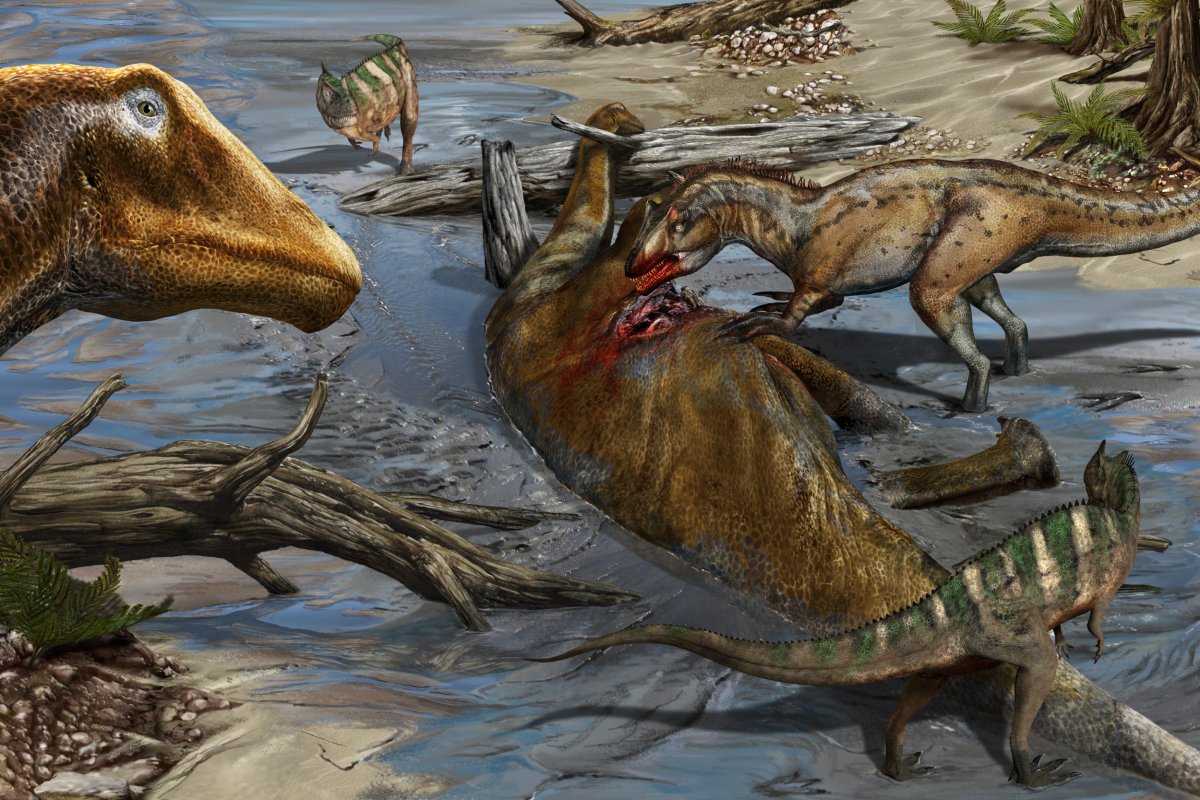
Paleontological Research and Discoveries
Ongoing Studies
Paleontological research remains a vibrant field, constantly evolving as new discoveries unearth layers of prehistoric life. The intrigue surrounding theropods has spurred numerous ongoing studies aimed at uncovering more about their biology, behavior, and eventual extinction.
- Fossil Analysis: Researchers continue to examine theropod fossils with advanced techniques, including 3D imaging and computer simulations. These technologies allow scientists to create detailed reconstructions of skeletal structures, helping them gain a clearer picture of how these creatures moved and behaved. For instance, studying the biomechanics of their limbs can provide insights into their speed and agility, which is crucial for understanding their predatory techniques.
- Excavation Projects: Universities and research institutions worldwide actively engage in excavation projects. The findings can be thrilling! Recently, teams in China have unearthed feathered theropods that provide valuable clues about the evolution of flight. Imagine the excitement of a paleontologist unearthing a fossil that could change our understanding of these creatures overnight!
- Collaborative Research: Global collaboration among paleontologists has become more prevalent, allowing for the sharing of data and expertise. This cooperation drives innovation, helping scientists piece together the global puzzle of dinosaur evolution and extinction. Conferences and symposiums create spaces for these passionate scientists to brainstorm fresh hypotheses, fueling their quest to translate ancient mysteries into meaningful knowledge.
This exploration reminds us of the incredible journey these researchers embark on. Picture applying for a grant, limiting your interactions with the outside world for months, and dedicating yourself to the rugged life of fieldwork. The allure of uncovering ancient secrets fuels their passion.
New Insights into Theropod Behavior
As ongoing studies yield fresh findings, they often produce intriguing insights into theropod behavior. The culmination of fossil evidence, technological advancements, and interdisciplinary research sheds light on how these creatures may have lived and interacted.
- Social Dynamics: Fossil tracks of Therizinosaurus and other theropods hint at pack behavior. Recent findings suggest that some theropods may have hunted in groups, similar to modern-day wolves. This collaborative hunting strategy reveals a complexity in their social dynamics that challenges previous notions of solitary predators. Think about the thrill of uncovering such evidence—a paleontologist piecing together clues akin to a detective solving a mystery!
- Nesting and Parental Care: Ongoing studies of nesting sites and fossilized eggs suggest that some theropods exhibited parental behaviors. Evidence of nests and carefully arranged eggs indicates they may have cared for their offspring after hatching, which illustrates a surprising level of sophistication in their reproductive strategies. It’s heartwarming to visualize these ancient creatures nurturing their young in long-lost environments.
- Communication and Display: Researchers are investigating potential vocalizations and visual displays in theropods, much like those seen in modern birds. The discovery of vibrant feather patterns among some theropods points to possible courtship rituals and social interactions. The idea of a vivid, feathered theropod displaying for mates offers an exciting glimpse into the evolutionary roots of avian behaviors.
In conclusion, the landscape of paleontological research is brimming with enthusiasm and discovery. Ongoing studies yield profound insights into theropod behavior, allowing us to better understand the lives of these remarkable creatures that once roamed our planet. As researchers continue to excavate the past, they not only enrich our comprehension of theropods but also illuminate the threads that connect our present with the rich tapestry of life’s history on Earth. Through their tireless efforts, we gain appreciation for the complexity of prehistoric life, inspiring a sense of wonder and curiosity about the natural world that ultimately bridges time and species.
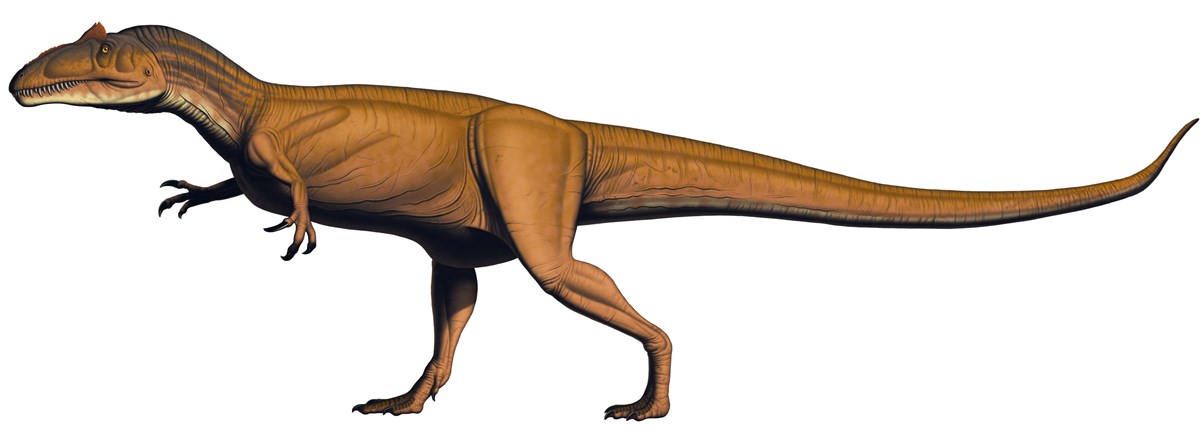
Theropod Fossil Sites
Locations around the Globality
Theropod fossils have been discovered in numerous locations around the world, each site contributing to our understanding of these fascinating creatures. These sites often tell intricate stories about the environments in which theropods lived and how they adapted over time.
- Badlands of Canada: One prominent location is the Dinosaur Provincial Park in Alberta, Canada. This UNESCO World Heritage Site has yielded some of the richest fossil beds of the Late Cretaceous period, including well-preserved specimens of theropods like Albertosaurus. Walking through these badlands, it’s easy to imagine the once-thriving landscapes teeming with life.
- Hell Creek Formation, USA: This geological formation stretches across Montana, North Dakota, and South Dakota and is famous for its late Cretaceous fossils, including the mighty Tyrannosaurus rex. Each summer, paleontologists flock to excavate this area, revealing treasures that help reconstruct the dynamic ecosystems of the past. It’s almost a pilgrimage for dinosaur enthusiasts!
- Gobi Desert, Mongolia: The Gobi Desert is another significant site, known for its remarkable discoveries of theropods such as Velociraptor. In the 1920s, expeditions led by American paleontologist Roy Chapman Andrews unearthed some of the first dinosaur eggs along with exquisite fossils of feathered theropods. The harsh yet fascinating landscape contrasts sharply with the lush environments where these creatures once thrived.
- Liaoning Province, China: In recent years, this region has become famous for well-preserved fossils that showcase theropods with feathers, providing vital links in understanding the evolution of birds. The feathered fossils found here have redefined our perspectives about feathers originally being used for insulation, display, and ultimately the evolution of flight.
As someone who dreams of exploring these iconic sites, there’s an irresistible allure in imagining the fossils hidden beneath the earth’s surface, waiting to be discovered.
Significance of Different Discoveries
Each fossil discovery adds a valuable piece to the puzzle of theropod evolution, behavior, and ecology. The significance of these finds can’t be understated—they reshape our understanding of how theropods interacted with their environments.
- Ecological Insights: Fossils from different strata offer clues about the variety of ecosystems in which theropods lived. For instance, fossils discovered in the Gobi Desert indicate that some theropods adapted to arid conditions, shedding light on their ability to thrive in various climates. This adaptability showcases their role in historical food webs and ecological structures.
- Evolutionary Links: The discovery of transitional fossils, particularly in Liaoning Province, emphasizes the connection between theropods and modern birds. These feathered specimens showcase features that illustrate how some theropods evolved traits seen in birds today. It’s a thrilling realization—seeing the threads of evolution connecting ancient and modern species!
- Social Behavior: Nesting sites featuring theropod eggs offer insights into parental care and social behaviors previously misunderstood. For instance, discovering clusters of nests in one area suggests that some species may have exhibited communal nesting behaviors, similar to some modern birds. It paints a picture of complex social structures that existed millions of years ago.
Reflecting on these findings fosters a sense of continuity between the past and present. Every fossil unearthed serves as a reminder that we are part of an ongoing narrative whose chapters are composed not only of ancient creatures but also of the ecosystems that have defined life on Earth.
In conclusion, theropod fossil sites around the world are treasure troves of knowledge, each contributing uniquely to our understanding of these ancient giants. From the badlands of Canada to the deserts of Mongolia, each discovery offers critical insights into the past, illustrating the intricate tapestry of life that has unfolded through time. As researchers continue to explore these sites, they not only reveal the stories of theropods but also illuminate the ongoing journey of life on this planet, deepening our appreciation for ancient history that still resonates today.
